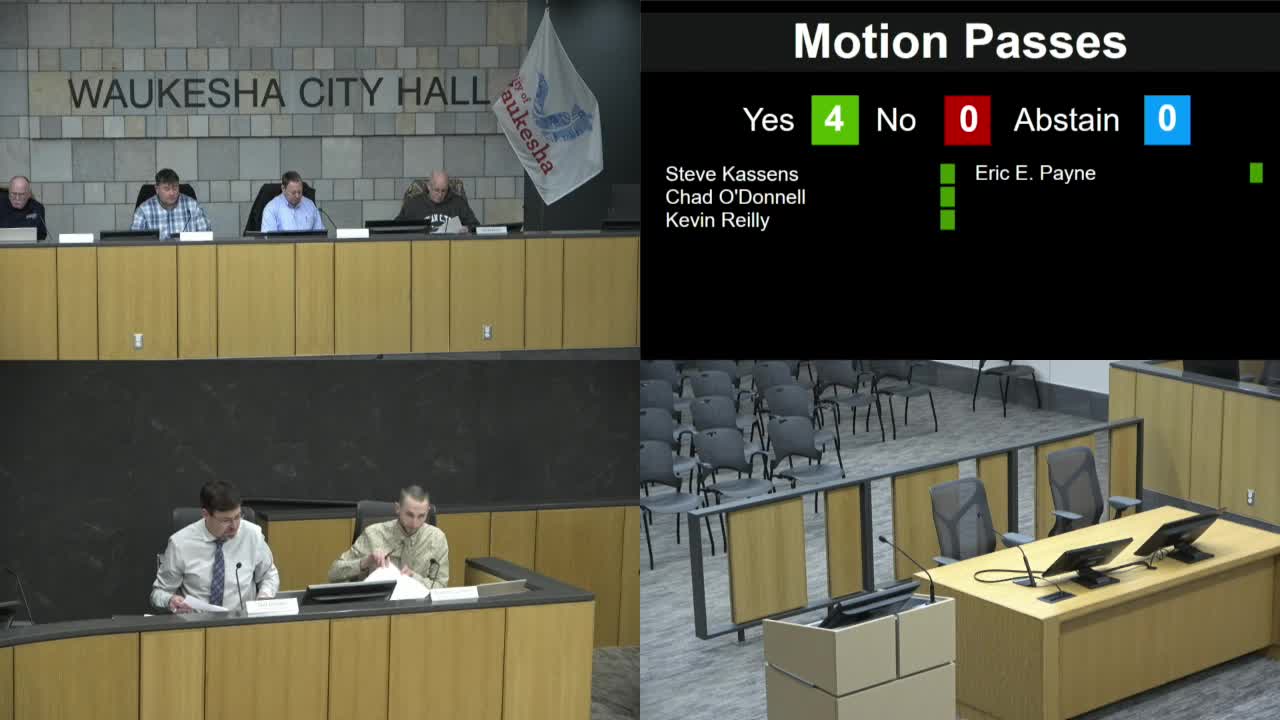City reports $140,000 savings and service changes after fall 2024 leaf collection
January 09, 2025 | Waukesha City, Waukesha County, Wisconsin
This article was created by AI summarizing key points discussed. AI makes mistakes, so for full details and context, please refer to the video of the full meeting. Please report any errors so we can fix them. Report an error »

City Public Works staff told the Waukesha Board of Public Works on Jan. 9 that fall 2024 leaf collection met service goals while reducing time and labor costs.
Joe Boginski, identified in the meeting as the manager at the City Garage who oversaw the program, and other staff said the city collected approximately the same amount of leaves as previous years but completed the work 14 days faster and with 6–10 fewer staff per day, totaling 1,982 fewer labor hours. Staff estimated that labor reallocation equated to about $120,000 in labor value, with an additional $15,338 saved in fuel and roughly $6,000 saved by using one fewer rented skid steer, yielding a combined reported savings of about $140,000.
Staff attributed the efficiency gains to operational changes: allowing daily progress to dictate routing rather than fixed schedules; using GIS mapping for routing and public information; equipping all end loaders with larger buckets to move more leaves per load; and reducing scheduled pickups from three to two. Staff said limiting pickups to two rounds accounted for much of the labor savings but generated some resident complaints where leaves fell late in the season.
Residents provided feedback that the map's 4-plus days indicator was confusing, and staff said they plan to improve the map to show whether a neighborhood is scheduled this week instead of the less-specific 4-plus notation. Staff said they will also consider allowing residents who missed late leaves to include them in a spring brush pickup. Staff noted operational constraints: the city must complete leaf collection before heavy winter weather and usually cannot extend beyond early December without risking snow cleanup conflicts.
Board members and staff said the changes also improved staffing flexibility during leaf season, permitting some vacation requests that previously would have been denied. Staff said the operational changes could help with recruitment by reducing the expectation of no time off during the season.
Staff concluded the experiment was successful and recommended continued adjustments to routing, communication, and potential spring pickup options to address resident concerns.
Joe Boginski, identified in the meeting as the manager at the City Garage who oversaw the program, and other staff said the city collected approximately the same amount of leaves as previous years but completed the work 14 days faster and with 6–10 fewer staff per day, totaling 1,982 fewer labor hours. Staff estimated that labor reallocation equated to about $120,000 in labor value, with an additional $15,338 saved in fuel and roughly $6,000 saved by using one fewer rented skid steer, yielding a combined reported savings of about $140,000.
Staff attributed the efficiency gains to operational changes: allowing daily progress to dictate routing rather than fixed schedules; using GIS mapping for routing and public information; equipping all end loaders with larger buckets to move more leaves per load; and reducing scheduled pickups from three to two. Staff said limiting pickups to two rounds accounted for much of the labor savings but generated some resident complaints where leaves fell late in the season.
Residents provided feedback that the map's 4-plus days indicator was confusing, and staff said they plan to improve the map to show whether a neighborhood is scheduled this week instead of the less-specific 4-plus notation. Staff said they will also consider allowing residents who missed late leaves to include them in a spring brush pickup. Staff noted operational constraints: the city must complete leaf collection before heavy winter weather and usually cannot extend beyond early December without risking snow cleanup conflicts.
Board members and staff said the changes also improved staffing flexibility during leaf season, permitting some vacation requests that previously would have been denied. Staff said the operational changes could help with recruitment by reducing the expectation of no time off during the season.
Staff concluded the experiment was successful and recommended continued adjustments to routing, communication, and potential spring pickup options to address resident concerns.
View full meeting
This article is based on a recent meeting—watch the full video and explore the complete transcript for deeper insights into the discussion.
View full meeting
